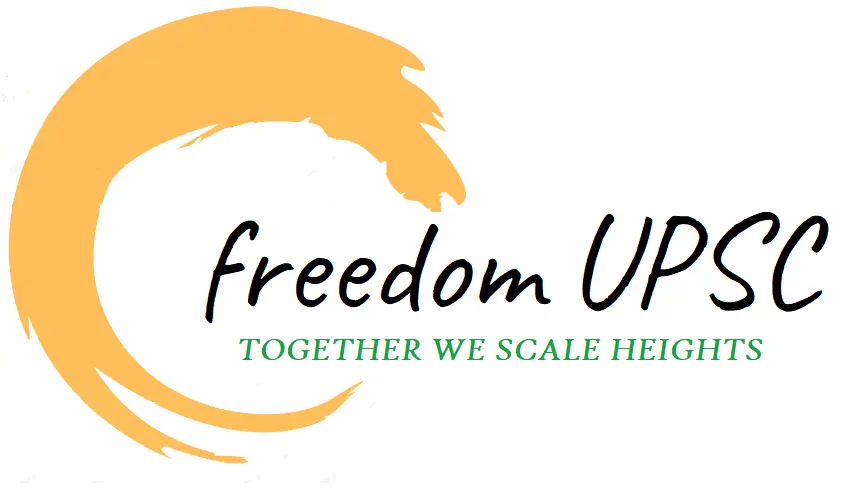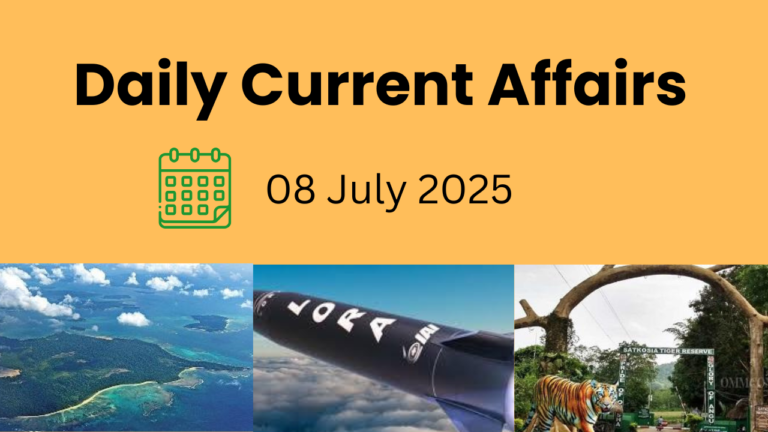1. Appointment to the Central Bureau of Investigation (CBI)
Context: A high-level committee led by the Prime Minister of India recently convened to select the next Director of the CBI. However, due to the lack of consensus, the incumbent director is likely to receive a one-year extension.
About the Central Bureau of Investigation (CBI):
Overview:
The CBI is India’s premier investigative agency, tasked with probing high-profile crimes, corruption cases, economic offenses, and matters related to national security.
Origins & Evolution:
- Traces its roots to the Special Police Establishment (SPE) formed in 1941, aimed at probing corruption in wartime procurement.
- Officially established in 1963 through an executive order based on the Santhanam Committee’s recommendations.
- Not a statutory body — not created by an Act of Parliament.
Functioning:
- Operates under the Department of Personnel and Training (DoPT), Ministry of Personnel, Public Grievances and Pensions.
- Derives investigative authority from the Delhi Special Police Establishment (DSPE) Act, 1946.
- Exempt from the Right to Information (RTI) Act for sensitive cases.
Jurisdiction:
- CBI requires state government consent to investigate within state jurisdictions.
- Supreme Court and High Courts can direct CBI to investigate anywhere in India without state consent.
- CBI can suo moto investigate cases only in Union Territories.
Organizational Structure:
Director of CBI:
- Appointed by the Central Government on the recommendation of a high-level selection committee.
- Holds authority over all operations, policy decisions, and organizational matters.
- Maximum tenure: 5 years.
Specialized Divisions:
- Anti-Corruption Division
- Economic Offenses Division
- Special Crimes Division
- Directorate of Prosecution
- Policy & Coordination Division
- Central Forensic Science Laboratory (CFSL)
Regional Offices: Located across India and headed by Joint Directors or Additional Directors.
International Role: Acts as the nodal agency for Interpol, handling cross-border investigations.
Appointment Process of the CBI Director:
Selection Committee Composition:
- Prime Minister of India (Chairperson)
- Chief Justice of India (CJI)
- Leader of the Opposition (LoP) in Lok Sabha
Legal Basis:
- Governed under the DSPE Act, 1946.
- Appointment is approved by the Appointments Committee of the Cabinet.
Key Concerns and Challenges:
Jurisdiction & Consent Issues:
- Many states have withdrawn general consent, weakening the CBI’s capacity for independent investigations.
- Frequent legal disputes over its jurisdiction.
Supervision and Political Interference:
- Reports to Central Vigilance Commission (CVC) and the DoPT.
- The Supreme Court once described CBI as a “caged parrot”, indicating its lack of autonomy.
Delays in Investigations: Bureaucratic red tape and legal complexities often cause delays in high-profile cases.
Manpower Shortage: Around 16% vacancies in sanctioned posts; challenges in recruitment and deputation from state services.
Deputation Issues:
- States are often reluctant to release personnel for CBI duty, particularly at the sub-inspector level.
Way Forward: Recommendations from the Parliamentary Committee
- New Legislation: Enact a dedicated law to define CBI’s powers, structure, and functions, replacing the outdated DSPE Act.
Structured Recruitment Framework:
- Ensure regular monitoring of recruitment and fill vacancies swiftly.
- Invest in advanced forensic and training facilities.
- National Security Provisions: Introduce a new law allowing CBI to probe national security-related offenses without seeking state consent.
Conclusion: The CBI plays a critical role in maintaining law and order, curbing corruption, and handling sensitive national cases. However, concerns related to its autonomy, jurisdiction, and efficiency remain pressing. Structural reforms, legal clarity, and better manpower planning are vital to restore the CBI’s stature as an independent and effective investigative agency.
2. Hydrogen vs Battery: The Future of Clean Fuel in Transportation
Context: As the global push for sustainable transportation accelerates, two prominent contenders have emerged:
- Battery Electric Vehicles (BEVs)
- Hydrogen Fuel Cell Electric Vehicles (FCEVs)
While BEVs currently dominate the market, FCEVs are gaining attention for their longer range, quick refueling, and adaptability to harsher climates.
Battery Electric Vehicles (BEVs):
- Powered by electricity stored in rechargeable batteries.
- Require regular charging via external sources like home chargers or public charging stations.
- Emit zero tailpipe emissions, making them eco-friendly.
- Examples: Tesla, Tata Nexon EV, MG ZS EV.
Fuel Cell Electric Vehicles (FCEVs):
- Run on hydrogen gas, which generates electricity through a chemical reaction in a fuel cell.
- Emit only water vapor, making them a clean and efficient solution.
- Suitable for heavy-duty and long-range applications.
- Examples: Toyota Mirai, Hyundai NEXO.
Hydrogen vs Battery: A Feature-wise Comparison
| Feature | Battery Electric Vehicles (BEVs) | Hydrogen Fuel Cell Vehicles (FCEVs) |
| Refueling Time | Several hours (depending on charger) | 5–15 minutes |
| Driving Range | Moderate (150–400 km) | Longer (500–700+ km) |
| Vehicle Weight | Heavier (large battery packs) | Lighter |
| Terrain Suitability | Less suited for rough terrain | Better for rugged/off-road use |
| Cold Climate Performance | Performance decreases | Performs better in cold temperatures |
India’s Electric Vehicle Landscape: 2023 Highlights
- EV Adoption: Electric Vehicles made up 5% of total vehicle sales in India.
Electric Three-Wheelers:
- India became the world’s largest market in 2023, surpassing China.
- Accounts for a staggering 60% of global sales in this segment.
Electric Two-Wheelers:
- India ranks second globally, with 0.88 million units sold in 2023.
- China leads with 6 million units sold.
Global Leaders: India, China, and ASEAN nations dominate the 2- and 3-wheeler EV segment, while rest of the world contributes less than 5%.
Conclusion:
Both BEVs and FCEVs offer clean and sustainable alternatives to fossil fuel vehicles.
- BEVs are currently more popular due to charging infrastructure and urban use.
- FCEVs, with faster refueling and better performance in long-range and rugged conditions, could be the future for heavy transport and rural mobility.
3. Saola: The Elusive Asian Unicorn
Context: Scientists have successfully mapped the genome of the Saola using tissue fragments from hunter-collected remains.
- Significance: First-ever full genome mapping of this species, aiding genetic conservation and recovery planning.
About Saola (Pseudoryx nghetinhensis):
- Discovered: 1992, during a WWF and Vietnamese Ministry of Forestry expedition.
- Nickname: “Asian Unicorn” due to its rarity and elusive nature.
- Appearance:
- Long, parallel horns (up to 20 inches), found in both sexes.
- Distinct white facial markings.
- Status: Critically Endangered – IUCN Red List (Estimated 50–300 individuals, 2015).
Habitat and Distribution:
- Region: Found only in the Annamite Mountains along the Vietnam–Laos border.
- Ecosystem: Dense, mist-covered evergreen forests with little to no dry season.
- Biodiversity Hotspot: Region supports many endemic and endangered species.
Major Threats:
- Snaring & Poaching: Widespread use of wire snares for bushmeat.
- Deforestation: Driven by agriculture, logging, and burning.
- Habitat Fragmentation: Isolates populations, lowers breeding success.
- Low Reproductive Rate: Naturally limits population recovery.
Importance of Genome Mapping:
- Source Material: DNA recovered from remains in hunter households.
- Sample Size: Genetic data from 26 individuals.
- Outcome: Helps determine:
- Genetic diversity
- Population structure
- Inbreeding risk
- Conservation planning
Key Genetic Insights:
- Historical Population Split: Two genetic lineages diverged 5,000–20,000 years ago, likely due to forest changes post-Ice Age.
- Human Impact: Rise of agriculture (~4,000 years ago) accelerated habitat loss and hunting, increasing isolation.
- Complementary Gene Pools:
- Each group lost different segments of diversity.
- Combining both lineages may restore lost genetic variation, aiding species survival.
Conservation Outlook:
- Genome mapping provides a critical tool for future conservation strategies, possibly including:
- Captive breeding programs
- Rewilding efforts
- Genetic rescue and habitat corridor design
4. Northeast India’s First Geothermal Production Well – Dirang, Arunachal Pradesh
Location: Dirang, Arunachal Pradesh
- Executed by: Centre for Earth Sciences and Himalayan Studies (CESHS)
- Significance: First successful geothermal production well in the northeastern region of India
International Collaboration:
- Partners:
- CESHS (India)
- Norwegian Geotechnical Institute (NGI), Oslo
- Geotropy ehf (Icelandic geothermal firm)
- Guwahati Boring Service (GBS) – Indian drilling team
About Geothermal Energy:
- Definition: Energy harnessed from heat beneath the Earth’s surface
- Sources of Heat:
- Radioactive decay of minerals
- Residual heat from Earth’s formation
- Applications:
- Electricity generation
- Direct heating and cooling
Advantages:
- Renewable & Clean
- Operates Year-Round (base-load energy source)
- Low Carbon Footprint
Disadvantages:
- Land subsidence risk
- High energy transmission costs (remote locations)
- Risk of toxic gas or chemical emissions
Geothermal in India: Current Scenario:
- Geothermal Atlas of India (2022) by GSI identifies potential sites.
- MNRE’s RE-RTD Programme promotes indigenous R&D in geothermal and other renewables.
- Telangana Pilot Project:
- 20 kW geothermal plant by Singareni Collieries in Manuguru, Bhadradri Kothagudem.
Major Geothermal Locations in India:
Some prominent geothermal provinces (per Geothermal Atlas):
- Himalayan Region – Jammu & Kashmir, Himachal Pradesh, Uttarakhand, Arunachal Pradesh
- Sohana Region – Haryana
- Cambay Graben – Gujarat
- Son-Narmada-Tapti (SONATA) – Central India
- Godavari Basin – Andhra Pradesh
- West Coast Belt – Maharashtra
- Andaman & Nicobar Islands
Conclusion:The successful drilling in Dirang represents a pivotal step toward geothermal development in the Northeast, backed by global collaboration. With rising energy demands and climate challenges, such renewable breakthroughs offer a sustainable path forward.
5. Jharkhand & the Triple Test for OBC Reservation in Urban Local Bodies
Context: Jharkhand has completed data collection to implement OBC reservations in Urban Local Bodies (ULBs) in accordance with the Supreme Court-mandated “Triple Test”.
- This paves the way for constitutionally compliant OBC quotas in urban governance.
What is the “Triple Test”?
Origin: Laid down by the Supreme Court in Vikas Kishanrao Gawali vs State of Maharashtra (2021)
3 Mandatory Steps for Valid OBC Reservation in Local Bodies:
- Empirical Inquiry: A dedicated commission must conduct detailed, data-based analysis of OBC backwardness in local bodies.
- Data-Based Quota: Reservation quantum should be based on the commission’s findings—not arbitrary.
- Reservation Cap: Total quota for SCs + STs + OBCs must not exceed 50% of seats in ULBs.
Progress in Jharkhand:
- OBC Commission Formed: Established in June 2023
- Data Collection Period: Dec 2023 – March 2024
- Comparative Approach: Studied Madhya Pradesh’s triple test model
- Delays: Some districts missed deadlines; final report pending due to Chairperson’s post being vacant
Next Steps:
- Analysis by institutions like XLRI, XISS, and IIMs
- Final verified report to be submitted to the state government
Survey Methodology:
- Scope: Urban areas only; not a full caste census
- Approach:
- Door-to-door identification of OBC households
- Political representation review (past 25 years of ULB data)
- Historical winners (general vs reserved seats)
OBC Population in Jharkhand:
- Approx. 50% of the population
- Main OBC Groups:
- BC-I: More socially/educationally backward (127 castes)
- BC-II: Relatively better-off (45 castes)
- Largest Group: Kudmi/Mahato (~15% of electorate)
Conclusion:
If implemented effectively, Jharkhand’s Triple Test compliance could:
- Become a model for other states
- Promote data-driven policy
- Enhance inclusive representation in urban governance
6. ITBP Successfully Summits Mt. Makalu – The World’s Fifth Highest Peak
Context: The Indo-Tibetan Border Police (ITBP) successfully scaled Mt. Makalu, the fifth highest peak in the world.
About Mt. Makalu:
- Mt. Makalu, standing tall at 8,485 meters, is the fifth highest mountain in the world.
- It lies in the Mahalangur range of the Nepal Himalayas, along the border between Nepal and the Tibet Autonomous Region of China.
- Located southeast of Mt. Everest, the mountain is known for its distinctive pyramid-shaped peak and four razor-sharp ridges.
- The peak rises majestically within the Makalu Barun National Park, offering panoramic views of the lush Barun Valley—a hotspot of biodiversity and glacial beauty.
- Subsidiary Peaks: Makalu includes two significant sub-peaks, Makalu II (7,678 m) and Kangchungtse, located approximately 3 km from the main summit.
Historical Significance:
- First Ascent: Mt. Makalu was first climbed in 1955 by a French expedition led by Jean Franco.
- It remains one of the most technically demanding peaks to scale due to its steep pitches, sharp ridges, and exposure to high-altitude weather hazards.
ITBP’s Achievement:
- The Indo-Tibetan Border Police (ITBP) has now successfully conquered Mt. Makalu, adding another milestone to its legacy of high-altitude excellence.
- This marks the 6th ‘eight-thousander’ scaled by the ITBP out of the 14 peaks above 8,000 meters on Earth.
- To date, the force has climbed 229 Himalayan peaks, including:
- Mt. Everest (8,848 m)
- Mt. Kanchenjunga (8,586 m)
- Mt. Dhaulagiri (8,167 m)
- Mt. Lhotse (8,516 m)
- Mt. Manaslu (8,163 m)
About ITBP:
- The Indo-Tibetan Border Police is one of India’s Central Armed Police Forces, functioning under the Ministry of Home Affairs.
- Specialized in high-altitude operations, the ITBP is tasked with guarding the 3,488 km-long India-China border in some of the world’s harshest terrains.
- Besides security, ITBP personnel are known for their mountaineering expertise, disaster response, and rescue missions in remote, inaccessible regions.
Did You Know?
- Makalu’s name is derived from the Sanskrit word ‘Maha-Kala’, a form of Lord Shiva, meaning ‘Great Black’—likely referring to the mountain’s dark, forbidding appearance.
- The Barun Valley, nestled below Mt. Makalu, is one of the few places on Earth where tropical forests meet ice-covered peaks, making it a UNESCO-recognized biodiversity hotspot.
A Testament to Human Spirit:
The ITBP’s successful ascent of Mt. Makalu not only highlights India’s mountaineering prowess but also symbolizes the resilience, discipline, and courage of the force that tirelessly guards our borders under extreme weather and terrain conditions.




